Fabric and Social Status: Fashion in the Late Middle Ages
Fashion in the late Middle Ages was an essential tool for marking one’s social status, with the more opulent and impractical denoting those of higher rank and nobility. Art of the era can tell us much about the types of clothing people wore, and what those garments said about their position within society. Notably, art, predominantly illuminated manuscripts, often depicted Biblical and allegorical characters, whose clothing was carefully selected to depict spiritual and symbolic importance.
The Court of France played a key role in defining art of the late Middle Ages, shaping much of what was worn throughout England, Germany, Italy, and beyond. The French Queen Isabeau of Bavaria was an influential icon throughout her reign, even if her choices were deemed over-indulgent and extravagant by many. Depictions of the French queen show her adorned in jewel-laced dresses covered in rich passages of brocade. French artist Christine de Pizan’s portrayal of the queen drenched in luxurious red fabric in her groundbreaking Le Livre de la Cite des Dames, (The Book of the City of Ladies) 1410, a book featuring famous women from throughout history, showcases how the queen’s clothing placed her at the centre of her social circle.
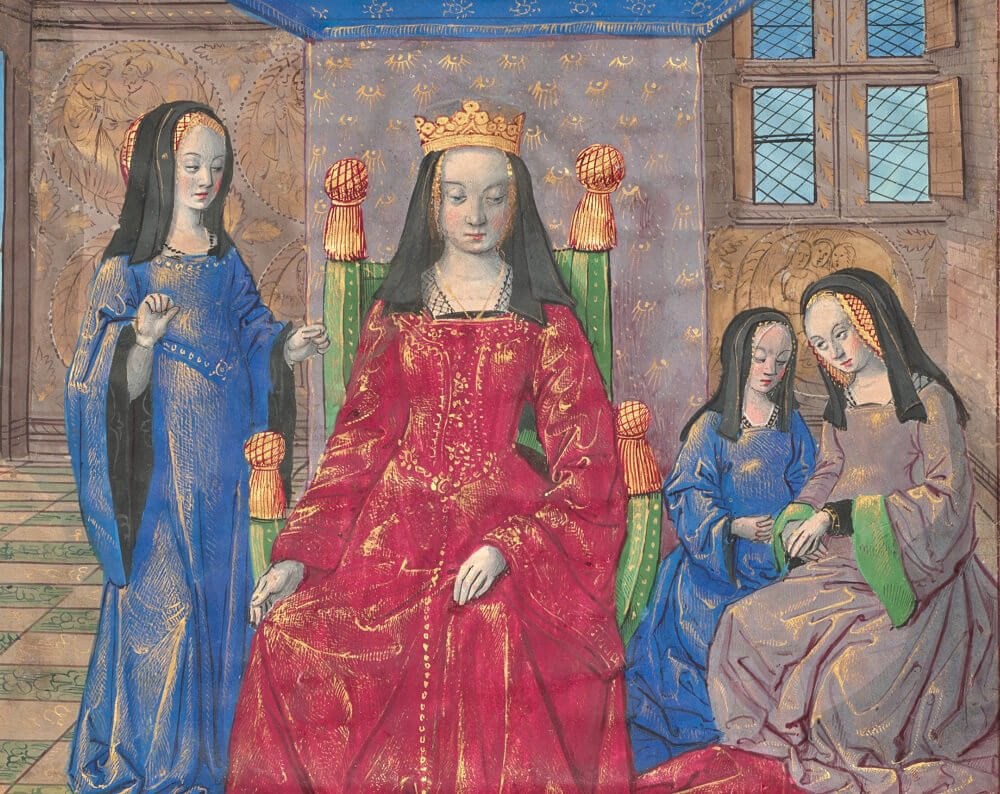
Anne of Brittany Enthroned and Accompanied by Her Ladies in Waiting, 1493, by Master of the Chronique scandaleuse
We also see how the queen, and her ladies in waiting, wear typical clothing of the time, with long, funnel shaped bombard sleeves, a fitted waist and full, long skirt. Typically, women from the 1300s onwards wore a linen chemise undergarment with long sleeves and a low and wide neckline, onto which they layered a cotta or cote-hardie. They sometimes doubled up the cote-hardie, to reveal the layer beneath. Women of lower classes wore a mantle or cape on top, while upper classes wore a houppelande, with a high neckline and long sleeves.
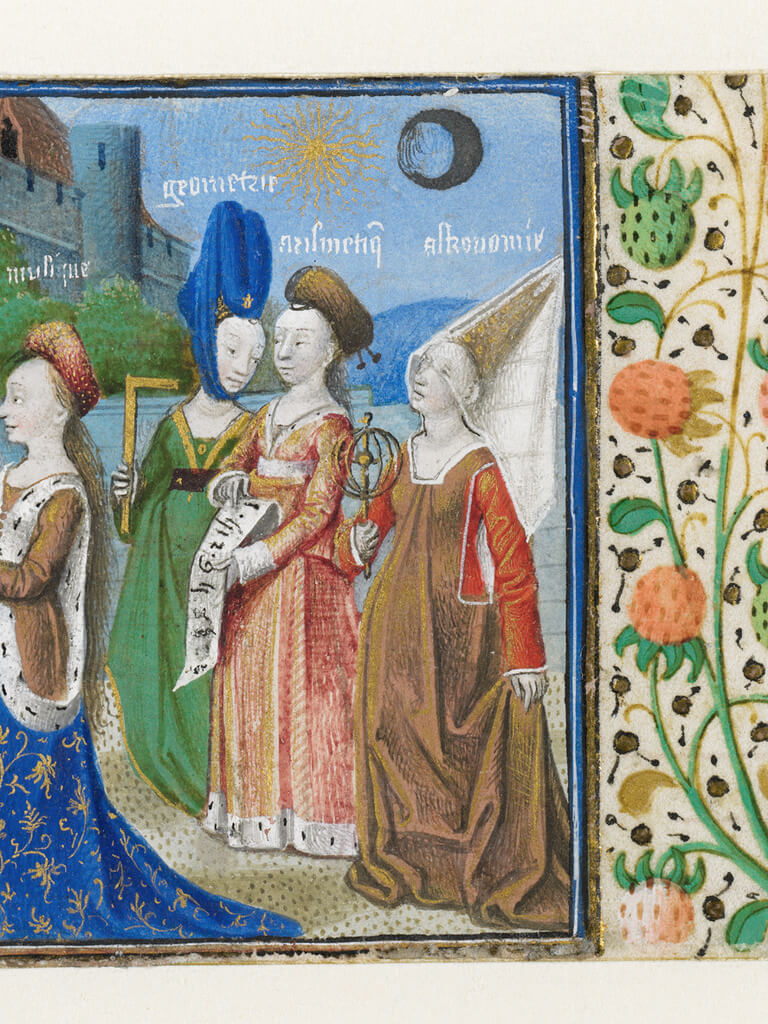
Philosophy Presenting the Seven Liberal Arts to Boethius, (detail) 1460-70, from The Consolation of Philosophy
Manuscript illuminators often revealed how clothing could denote one’s job, or place in society, even if artists presented us with a somewhat idealised version of real life. In the illuminated manuscript depicting Emperor Sigismund Arriving in Siena, 1460, women wear tall, pointed hats and long, pointed shoes; such impractical garments undoubtedly accompanied those living a life of leisure. In the illustration Anne of Brittany Enthroned and Accompanied by Her Ladies in Waiting, 1493, painted by the anonymous artist known as Master of the Chronique scandaleuse, we see the importance of the colour red, as worn by Anne of Brittany, a pigment derived from dried insects at great expense. The significance of red also appeared in Biblical and allegorical stories, as seen in the illuminated illustration Philosophy Presenting the Seven Liberal Arts to Boethius, 1460-70, where the figure of Fortune is engulfed deep crimson.
Men’s clothing of the late Middle Ages could be equally as spectacular as that worn by women. The template worn by most men from the mid-1300s onward was a doublet worn over linen shirts and drawers. Doublets were made from two or more layers of cloth, and often padded or quilted, echoing the design of clothing worn by knights under a breastplate, giving men the same quality of prestige associated with knights entering into battle.
Like women, men of rank wore a luxurious houppelande, which could be made in exuberant fabrics including silk damask, satin, velvet, cloth of gold and lined in ermine fur or adorned with gemstones. In the illumination A Princely Audience, from the Grande Bible Historiale, 1395-1401, we see men wearing long houppelande with bombard sleeves, while a depiction of King Solomon Receiving the Queen of Sheba, from the same illuminated manuscript, wears a high standing, stiff collar, and has sleeves lined with fur, lending him an air of grandeur and importance.
While Biblical figures sometimes wore the same contemporary dress as real people in art, others were given elements of intricate and dazzling Middle Eastern decoration, which society saw as relics from the time of Christ. This included excerpts of Arabic script or gold lines encasing echoing circles, as depicted with exquisite detail in Christ’s clothing for the illuminated illustration The Way to Calvary, 1420.


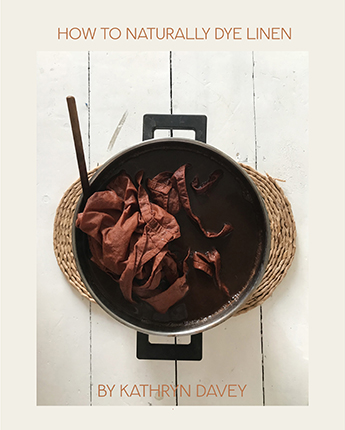
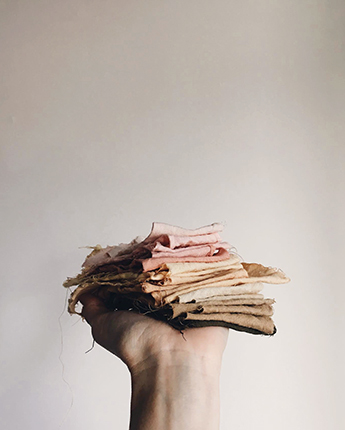

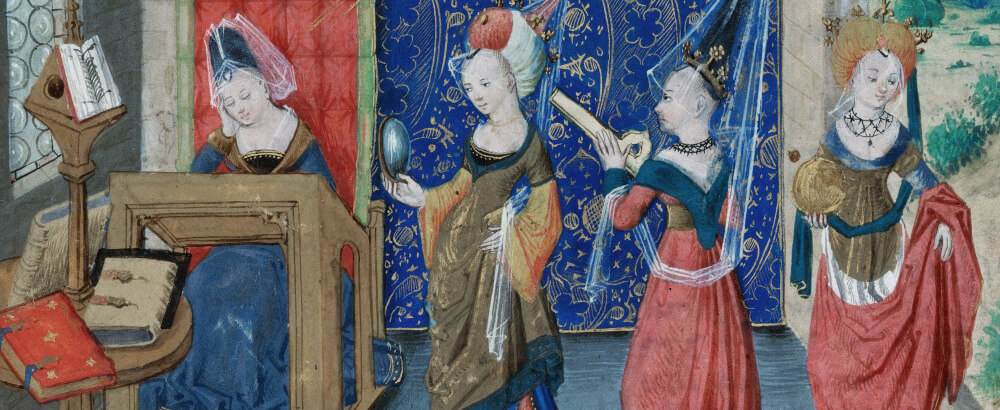
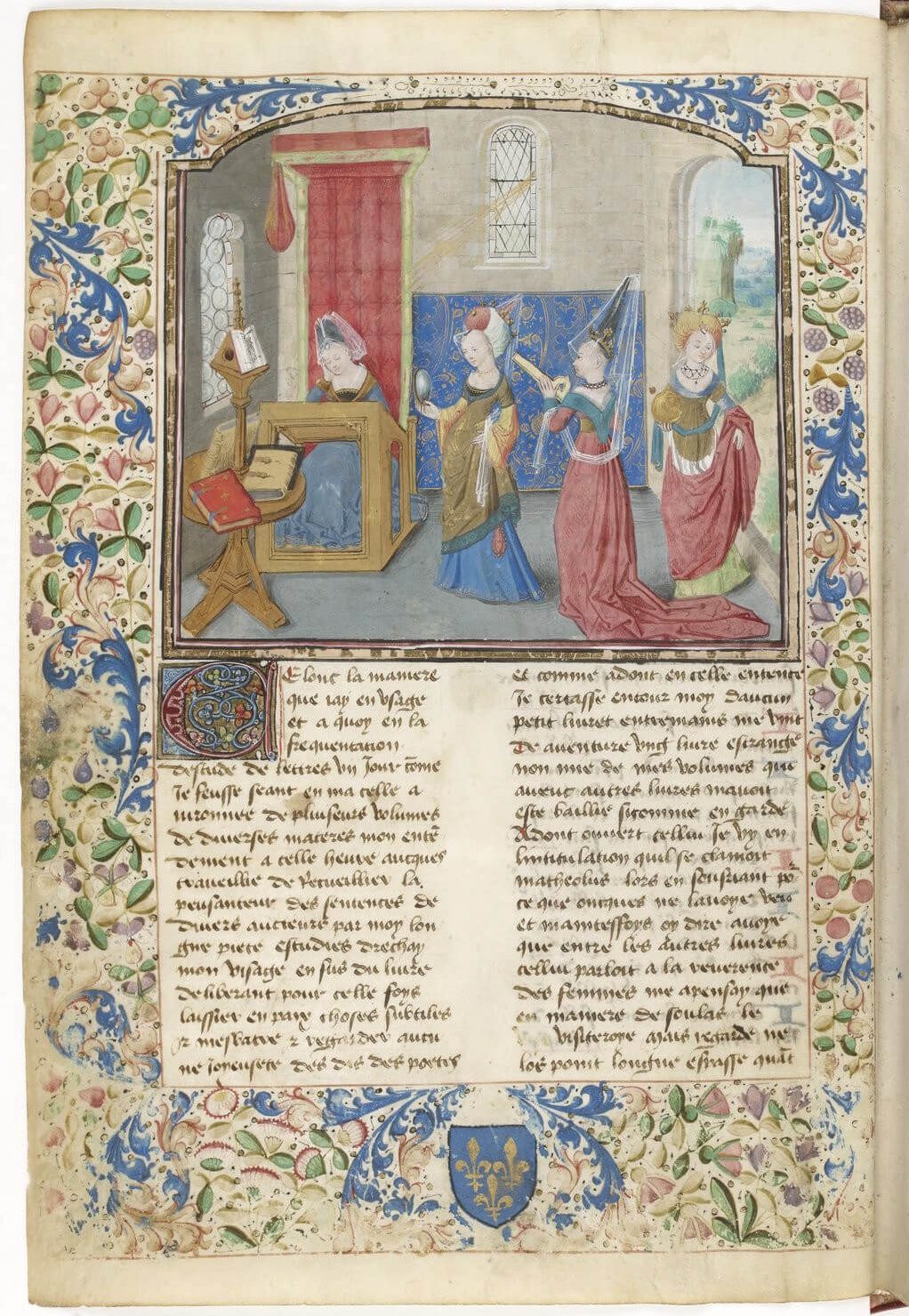
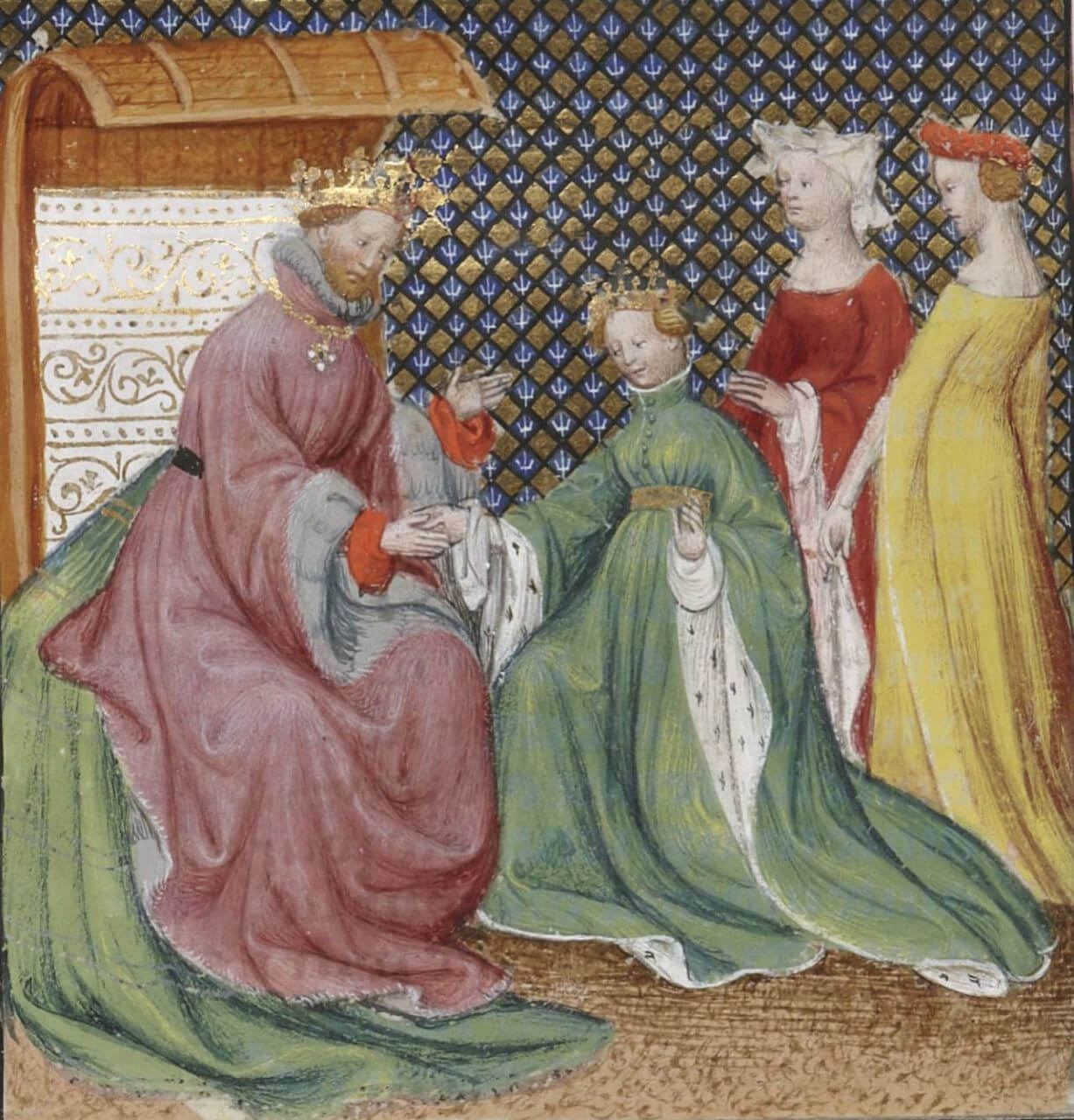
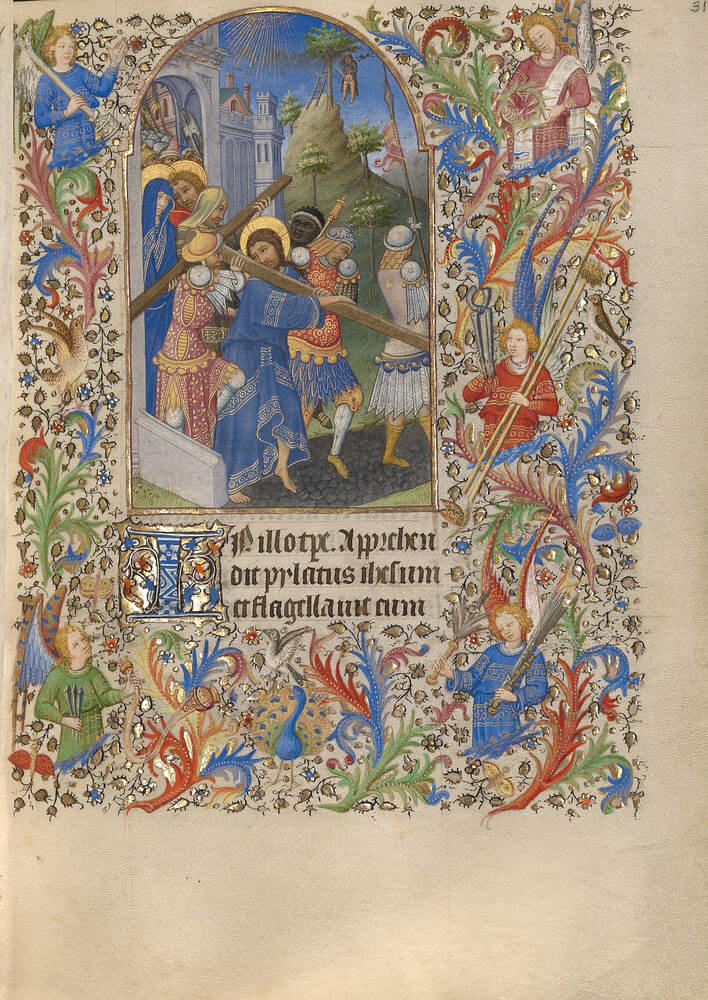

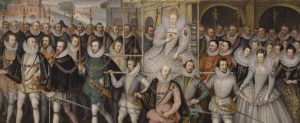
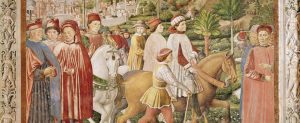
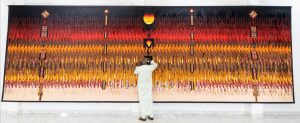
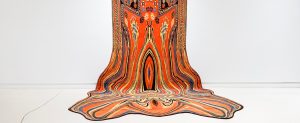






































Leave a comment